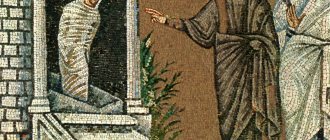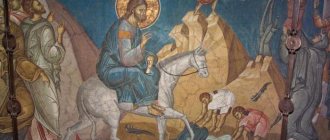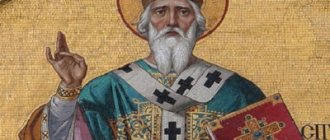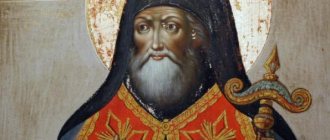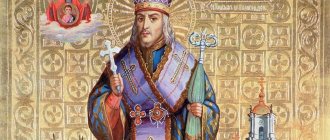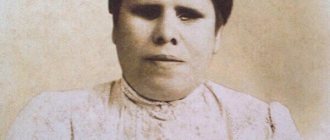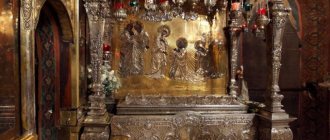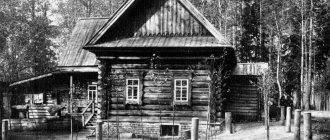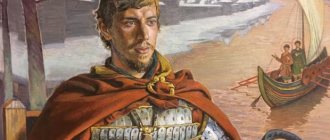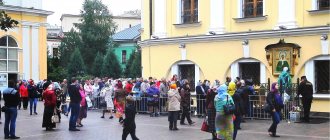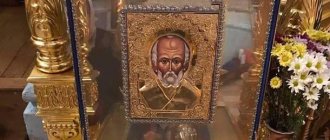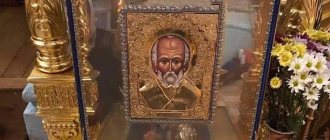Who is Saint Lazarus in Orthodoxy
The name of this man, who lived at the same time as Christ, is known to Christians all over the earth. Lazarus was a rich resident of Bethany, a city located near Jerusalem. This man, according to the revelations of the Gospel of John, the Savior himself called his friend. The Lord, together with his disciples, often visited Jerusalem, and his path passed through Bethany.
At that time, Judea was dominated by pagans and few people believed in Christ. Lazarus was a friend of the Savior and completely shared his views. This man died at the age of thirty and was resurrected by the Lord on the 4th day after his death. The Savior prayed at his coffin and shouted for him to come out of the cave in which he was buried. In front of a large crowd, a corpse that had begun to decompose, entwined in burial shrouds, rose from the tomb.
The miraculous resurrection of Lazarus, which took place before people’s eyes, confirmed the fact that Jesus is the Son of God. The Savior promised everyone who believed in him eternal life. Believers, according to the assurances of the Lord, even if they die, will later come to life. The miraculous resurrection of the righteous man is a great sign of the future revival of all Christians promised by the Savior.
Manifestation of the Incarnation of Jesus Christ
Photo: Hram-olgi.ru
The resurrection of Lazarus not only gave people hope that earthly life is temporary and that we will all be resurrected at the command of Christ. This miracle showed the divinity of Jesus twice. When Lazarus died, the Son of God knew this, promising his disciples to show the real miracle of divine manifestation. Many did not understand this phrase, but Christ directly said that Lazarus died. At that moment, no one believed why He was saying this, until Jesus raised this dead man.
The second manifestation was that Jesus shed tears, which proved his true, and not ostentatious, Incarnation. John Chrysostom writes about this: “Why does the evangelist carefully and more than once notice that He wept and that He held back grief? So that you might know that He was truly clothed with our nature.” The Jews witnessed this event, although some doubted the divine essence of Christ. Subsequently, this doubt led to the fact that the Lord was crucified, because they did not believe and envied Him.
The miracle of the resurrection of Lazarus has a special, allegorical meaning for every Orthodox person.
Biography of Saint Lazarus
Born into a pagan family, Lazarus received the Savior in his home, believed in him and became a Christian. The Lord allowed him to die so that he could then come to the tomb and raise him from the dead, demonstrating his Divine power.
Origin
At the beginning of our era, in ancient Bethany, located near Jerusalem, there lived a rich man named Lazarus. He had two sisters - Martha and Maria. Lazarus himself was a Jew and a pagan. After meeting the Savior, he changed his views and became a Christian.
Meeting Jesus
Fate brought Lazarus together with Christ back in the days when the Savior traveled through Judea with his disciples and preached his teachings to people. Jesus often walked along the Jericho road to Jerusalem, and his path passed through Bethany. Lazarus's sister, Martha, saw the Lord and invited him to her house. She ordered the servants to prepare a rich meal for Christ. The second sister, Mary, sat at the feet of the Savior and began to listen to his speeches. Lazarus also became interested in the teachings of Christ and became his like-minded person. The Lord often stayed at his house and even considered this man his friend.
Death and Resurrection
Unexpectedly, at the age of 30, Lazarus died. They buried him in a cave near the city of Bethany. Many Jews from Jerusalem came to the orphaned sisters to mourn their grief. Mary and Martha were greatly saddened by the death of their brother, and when he was sick, they called Christ to heal the sick man. However, the Savior was in no hurry to go to Bethany. The Lord went to the city when the sick man had already fallen asleep, or rather died.
The Savior called the death of a friend a dream. Jesus told his disciples that a man had fallen asleep in Bethany, and he would go to wake the deceased. Human death for the Savior was just a dream from which he could awaken anyone who believed in him. Before the resurrection, Christ cried for the first time, and people were able to convince themselves that the Lord is God in the form of a man.
Near the tomb of Lazarus there were Jews who did not believe in Christ. It was they who showed the Lord where the deceased was buried and rolled away the stone that was blocking the path to the cave. The smell of a decaying body escaped from the locked tomb, and all the Jews crowded around the tomb felt it. People who did not believe in Christ heard how the Savior ordered a dead man to rise again. The Jews saw the first steps of the resurrected man, they removed the burial shrouds from him.
However, the fact of the resurrection of the deceased was perceived negatively. Even after this miracle, the Jews did not believe in Christ, but reported him to the Jewish authorities and swore to kill the Lord. The disbelief of the resurrection witnesses to the Divine miracle is a conscious resistance to the obvious truth.
Life after resurrection
The resurrected Lazarus became proof of the Divine origin of Christ. Jews from all over the country came to Bethany to look at the revived man. Many pagans became followers of the Savior's teachings. Of course, the pagan clergy did not like this state of affairs in Judea. They became embittered with Lazarus and decided to kill him.
In Judea at that time, Christians were persecuted. The First Martyr Stephen, who preached the teachings of Christ in Jerusalem, was stoned. Lazarus and his friends, Maximinus and Celidonius, were not killed, but were expelled from Judea. The Savior's supporters were brought to the seashore and put into a boat without oars. By Divine will, they sailed to the shores of ancient Cyprus.
After the miraculous resurrection, 30-year-old Lazarus lived on the island for another 30 years. Here the righteous man met the holy apostles Barnabas and Paul. By the disciples of Christ he was elevated to bishop (preacher) of Kitia (Kition). For the rest of his life he preached the Word of God, observed strict abstinence, and even received the episcopal omophorion from the hands of the Mother of God herself.
Chapter 33. The Raising of Lazarus. Conspiracy of the High Priests and Pharisees
The greatest miracle was about to happen. With this miracle, Jesus wanted to convert the hearts of those who had not yet believed in Him and give His enemies the opportunity to come to their senses and repent; therefore, He not only did not shy away from doing it publicly, but even sent Martha for sister Mary and remained, waiting for her and her companions, at the very place where Martha met Him. Although Martha secretly
called Mary, but the haste with which the latter got up and walked forced the Jews who consoled her to follow her.
They, as the Evangelist explains, thought that she had gone to her brother’s tomb to cry, so they followed her. The Lazarus family apparently enjoyed special love and respect among their acquaintances, since many of the Jews who lived in Jerusalem, which was fifteen stades
(John 11:18) (about three kilometers) .
Mary approached Jesus, fell with tears at His feet and said: Lord! if you had been here, my brother would not have died
. Mary shed tears, and the Jews who came with her also cried; Mary’s tears, plucked from the depths of her grief-stricken soul, brought tears to the eyes of Jesus, while the feigned tears of the Jews accompanying her outraged Him.
«Jesus... was grieved in spirit and became indignant
(John 11:33).
The Greek word translated grieved contains the concept of indignation, anger and disgust caused by an outrageous act, and the word translated outraged
contains the concept of shudder, shock;
This means that the whole expression would be more accurately translated: indignant and shuddered.
What was the soul of the Lord indignant at that moment?
Some time later, when the Jews who were there expressed quite clearly their hostile attitude towards Him, He again became indignant (v. 38: same Greek word); this gives reason to assume that the Lord at that moment was indignant at the same thing, that is, at the Jews, at their behavior at that time. The Evangelist says that the Lord was so indignant when he saw Mary crying and the Jews who came with her crying, that is, when he saw, on the one hand, the sincere tears of the deeply grieving sister of the deceased, and on the other hand, next to her, the crying of these people who nurtured evil enmity against Him, the beloved friend of the mourning sisters. The Lord was outraged to the depths of his soul by the crocodile tears of His enemies, the Jews. Moreover, the Lord saw that this enmity towards Him would lead Him to death; and behold, the organs of this enmity towards Him are here, during the greatest miracle that is now about to take place. This miracle will be the greatest sign and proof of His messianic dignity, and should extinguish the enmity towards Him; but instead of this it will be (He knew it) a decisive reason for the sentence of His death (verses 47-53). This disturbance was so strong that it produced an external bodily shock; but this shock, in the sense of the Greek word, was not a completely involuntary shock, but expressed some effort by the Lord Himself to suppress this spiritual indignation. The outward expression of a quick and decisive victory over the disturbance of the spirit was a short and quick question: where did you put Him
?
(John 11:34). The question was addressed, no doubt, to the sisters of the deceased, and they, of course, answered Him: go and look.
Jesus shed tears (John 11:35). The disturbance of the spirit was defeated and resolved by the tears of the Lord - a tribute to His human nature" (Bishop Michael. Explanatory Gospel. 3. pp. 347-349).
The evangelist speaks of the impression that Jesus’ tears made on the Jews present. Even some of them were touched by His tears and said: look how He loved him
(John 11:36).
Others, gloating, said: Could not this one, who opened the eyes of the blind, have done so that this one would not die?
If he could, then, of course, loving Lazarus, he would not allow him to die;
however, Lazarus died; therefore, Sey
could not do this, which is why, out of annoyance, he cries.
The embittered enemies of Christ avoided calling Him by name, and therefore even now they contemptuously said about Him - This
.
The Lord, suppressing the feeling of sorrow in Himself, silently approached the tomb of Lazarus, that is, to the cave, the entrance to which was blocked with a stone; Having reached her, He ordered the stone to be taken away. The opening of the caves in which the dead were buried was carried out only in exceptional cases, and then only soon after burial, and not when the corpse was already decomposing. The decomposing corpse of a person generally makes a depressing impression not only on relatives and friends of the deceased, but even on strangers. Moreover, in the warm climate of Palestine, the decomposition of corpses begins very soon after death, as a result of which the Jews buried their dead on the same day on which they died; on the fourth day after death, the decomposition should have reached such a degree that even the believing Martha began to doubt the possibility of the resurrection of Lazarus; therefore, as if wanting to prevent this sad and aimless, in her opinion, spectacle, she timidly says to Jesus: Lord! already stinks; for four days since he was in the tomb
(John 11:39).
When those sent by Lazarus' sisters told Jesus that the one He loved was sick, Jesus answered them that this sickness was not for death, but for the glory of God. When Martha came out to meet Him and announced to Him that her brother had died, He said to her: Your brother will rise again.
, for
I am the resurrection and the life... Do you believe this?
(Mn. 11, 23, 25–26).
Now, reminding Martha of what had been said before, He asked: Didn’t I tell you that if you believe, you will see the glory of God?
(John 11:40).
After that, the sisters agreed to open the cave, and the stone was taken away from the entrance to it. Jesus, who personally has the power to perform miracles and resurrect the dead, knew, however, that His embittered enemies attribute all His miracles to the power of the devil; therefore, probably wanting to show the people standing right there that he was working miracles with divine, and not devilish power, He raised his eyes to heaven and said loudly: Father! I thank You that You heard Me
(John 11:41).
To the apostles who stood closer to Him, He had to show that He would now perform an extraordinary miracle, albeit by divine power, but personally belonging to Him, since He is in the Father and the Father in Him. Therefore, continuing His prayer, probably in a voice that could only be heard by the Apostles and sisters of Lazarus around Him, He said: I knew that You would always hear Me;
but I said this for the sake of the people standing here, so that they might believe that You sent Me. Then, coming closer to the entrance to the cave, He called Lazarus in a loud voice: Lazarus! get out
(John 11:43).
And in front of the crowded crowd, a miracle incomprehensible to the human mind happened: it was not the supposedly dead man who rose from the coffin, but a man whose corpse was already decomposing and emitting a stench; stood up, wrapped in burial shrouds, with his head tied in a scarf; got up, left the cave and stopped at the entrance to it, since the burial shrouds hampered his movements; and in this form he appeared to the amazed crowd. Untie him,
said Christ,
let him go
.
This miracle made a stunning impression on the people. Even many of the Jews believed in Him, but some of them, harboring their anger, silently withdrew and hurried to Jerusalem to announce to the Sanhedrin what had happened.
Iconography
In ancient times, icon painters depicted two scenes related to the name of Lazarus on icons. One of them was dedicated to the miraculous resurrection of the saint. The second plot of the iconography is a drawing of a gray-haired old man in bishop's clothes, decorated with crosses.
An ancient icon depicting the Savior standing at the entrance to the cave and the risen Lazarus wrapped in a shroud is not just an episode from the life of a saint, but a miraculous act of Christ himself, who opened the entrance to the Eternal Kingdom for people, captured in colors. However, there is also a separate image of the holy preacher - in bishop’s vestments with the Holy Gospel in his left hand.
The Raising of Lazarus is an Example for Our Faith
Important!
Although Jesus Christ knew full well that God the Father wanted to raise Lazarus from the dead through Him, His human experiences tried to take over. And so that these experiences would not have a negative impact on the faith of Jesus Christ, He did not look at the deceased, but raised His gaze to heaven to the Father. This is a great example for our faith!
While we look at a problem or illness, it seems big and insoluble to us. When we turn our gaze to Jesus Christ by faith, God gives the answer and performs miracles! And for this we have a basis in Scripture: “Looking unto Jesus, the author and finisher of our faith, who for the joy that was set before Him endured the cross, despising the shame, and is seated at the right hand of the throne of God.” (Hebrews 12:2)
The Greek word for "perfector" is: "τελειωτής - teleiotes." Means: completer, completer, implementer.
Location and relics
Lazarus was buried in Kitia. Several centuries passed, and in 890 his most holy relics were recovered, placed in a marble ark and exhibited in the church for veneration. In 898, the Byzantine emperor Leo the Wise ordered the remains of the saint to be transferred to Constantinople and placed in a temple erected in honor of the Righteous Lazarus. However, later (in 1972) some more of the relics were discovered in Kitia. Nowadays, the remains of the righteous man are in the temple near the place where the resurrected Lazarus was buried for the second time (on the island of Cyprus in the city of Larnaca).
Another preacher’s tomb is located in Bethany. This city is located 3 km from Jerusalem. Currently, Bethany is the Arabic Al-Aizariya, in the past it was Lazarion. The city was built by Christians in the 4th century, that is, in Christian times, around the tomb of a resurrected saint. True, ancient Bethany, where Lazarus lived, is located in a different place - not far from Al-Aizariya.
The saint's tomb is now located in Palestine. Muslim Arabs conquered these lands in the 7th century. True, the righteous preacher is also revered in a Muslim country.
Greek legend says that after the resurrection, Lazarus lived for 30 years, after which he died in Cyprus
After the resurrection of Lazarus, the holiday of the Jewish Passover was approaching, after which the last days of the earthly life of Jesus Christ began.
About the life of the righteous Lazarus, a later Greek legend reports that after his resurrection, Lazarus lived for another 30 years. He became the Bishop of Kitia on the island of Cyprus, where he later died.
Lazarus fell under the persecution of the Jerusalem church, which began after the murder of the first martyr Stephen.
The relics of righteous Lazarus were found in 890 in the city of Kitia.
He, along with another saint, was expelled from Judea and put out to sea on a boat without oars, which then sailed to Cyprus. There Lazarus and the apostles preached the teachings of Christ.
According to Orthodox tradition, the relics of the righteous were found in 890 in the city of Kitia. In 898, the relics of Lazarus were transferred to Constantinople, where they were placed in a temple in the name of St. Lazarus.
Infinity Island
The second known Lazarus Pit used by Ra's al Ghul was located on Infinity Island. This pit is different from the others because it is connected to the island's volcanic system, which makes the chemicals more powerful than a regular Lazarus Pit, but also makes it more dangerous. It is also noteworthy that the water in this pit is orange-red in color due to its connection with volcanoes.
In his quest for world domination, Ra's came across this Lazarus Pit around the 17th century, and as he enslaved the island's inhabitants and used the island's resources for his mad crusade, Ra's began using the pit located near the core of two volcanoes on the island . to rebuild your life. By using the pit's properties, Ra's also extended Talia's life, although he never allowed her to go inside the pit. Ra's was eventually forced to use the pit to heal Talia from certain death, but her sudden defection after such a sacrifice caused Ra's to lose his temper and attack Batman, who was partially responsible for Talia's betrayal. During the battle between Ra's and Batman, the former fell into a pit, causing his body to be engulfed in flames and his mind driven to madness. When Ra's fell into the pit a second time, the unusual activity caused the volcanoes to activate and erupt, destroying the entire island and apparently killing Ra's. Needless to say, this Lazarus Pit was also destroyed.
Resurrection process
Batman tried to catch Ra's and bring him to justice, but Talia convinced Batman that Ra's was dead, and after Batman left, she activated a machine that was built over the Lazarus Pit, with a mechanism that placed Ra's sa into the pool for a few minutes before returning it to the surface. This secret base of operations was destroyed following Batman's encounter with Ra's and the Lazarus Pit. However, the chemicals from the pit mixed with an explosion that destroyed the place and affected Ra's loyal servant, Ubu, who became a crazed zombie after being exposed to the chemicals.
Ra's had another pit in the Alps that he often used as it was the safest place for him to begin the recovery process.
Powers
The substance filling each hole is a chemical mixture of unknown composition, apparently originating from somewhere deep within the earth's crust. For some unknown reason, it only surfaces at certain key points around the globe, usually at the junction of ley lines. Chemicals can rejuvenate the sick and dying (and even the technically dead if they are not already truly dead), but usually kill a healthy person. In addition, it sometimes seems to act as a means of restoring youth, reducing the user's age based on how long they were in the pit, and in many cases resurrecting the dead.
However, for maximum effectiveness, someone must be placed in the Lazarus Pit within a relatively short period of time after their death. Although old bodies can be resurrected, there is no guarantee that they will return in perfect condition. One day, Ra's exhumed the bodies of Thomas and Martha Wayne, threatening to plunge them into a pit, thus turning them into zombies.
When used for healing or to bring someone back to life, that person also becomes temporarily insane - although in one case where it was used on the Joker, it had the opposite effect (meaning it temporarily made them sane).
